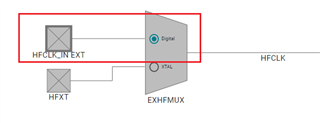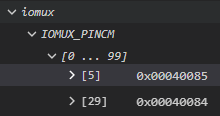Other Parts Discussed in Thread: SYSCONFIG, MSPM0G3507, LP-MSPM0G3507
Tool/software:
How do you control the TIMG12 (32-bit timer) to do a period capture using an external ~32MHz clock source and an external 1Hz clock signal?
The Technical Reference Manual (slau846b) states:
27.2.1.1 Clock Source Select and Prescaler
The TIMx clock (TIMCLK) can be sourced from an internal clock or an external signal trigger to advance the clock.
So how is this done? I tried SYSCONFIG many ways but not possible.
I need to count how many external 32MHz clocks occur within the 1 sec external clock signal (rising edge to rising edge).




